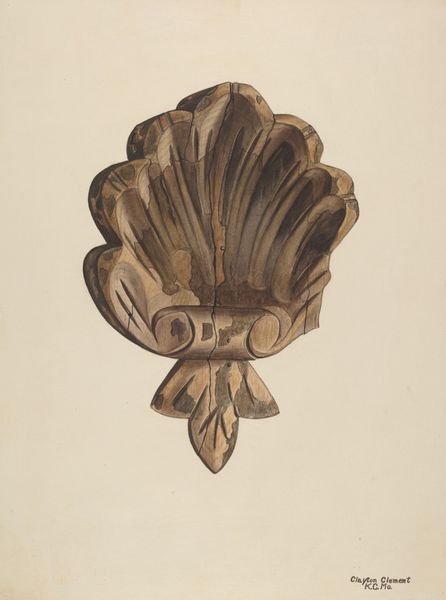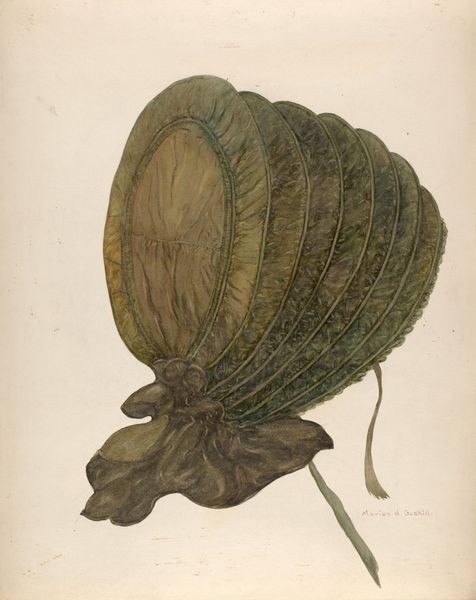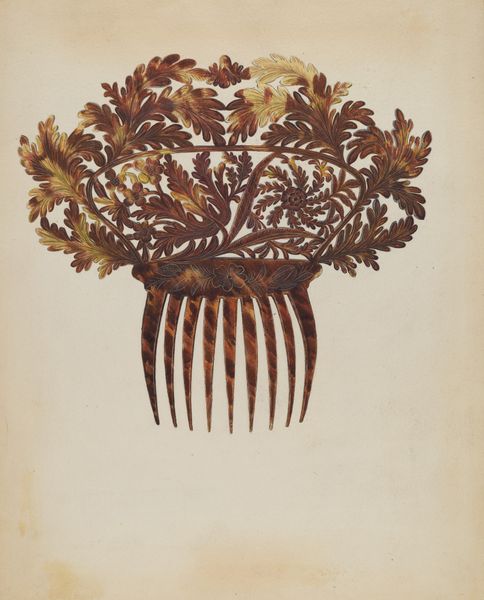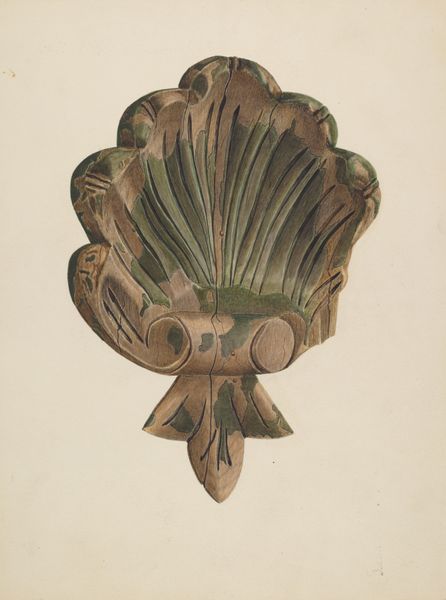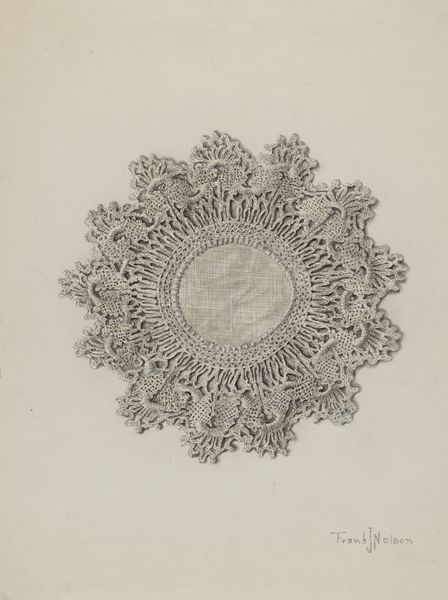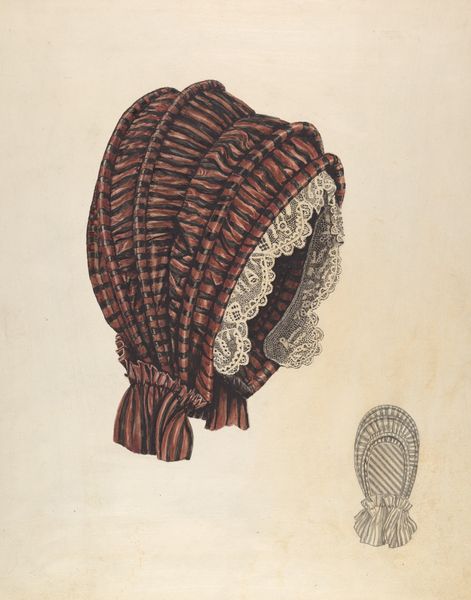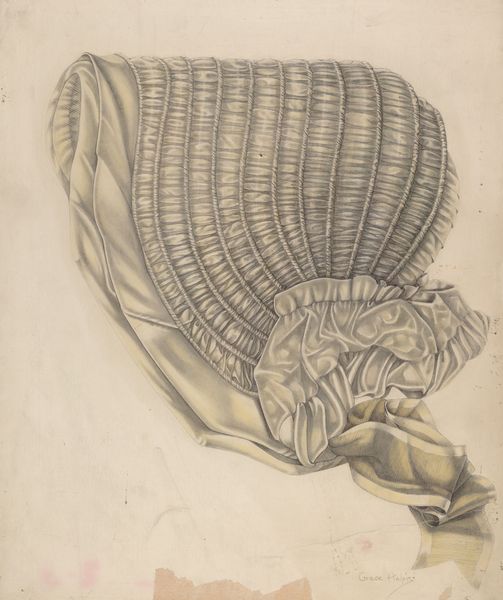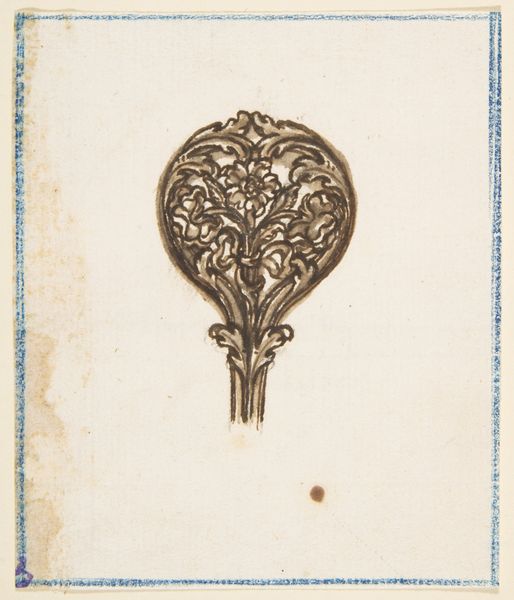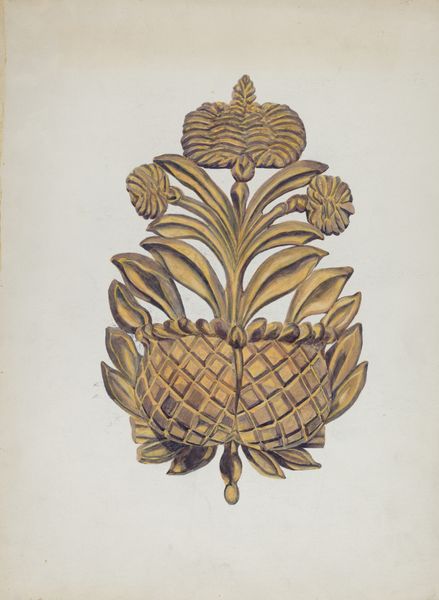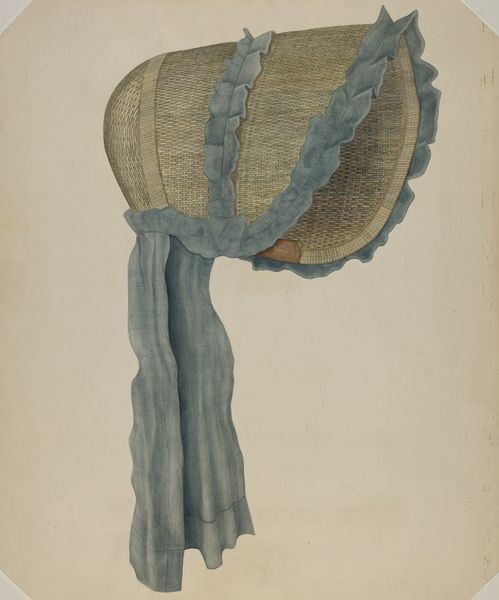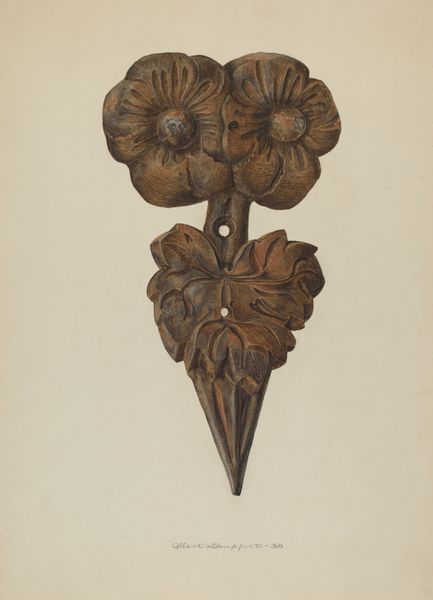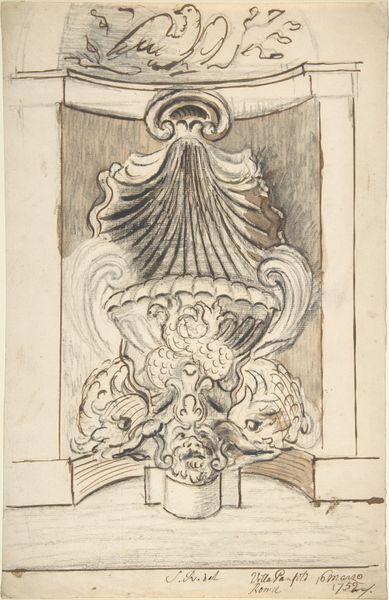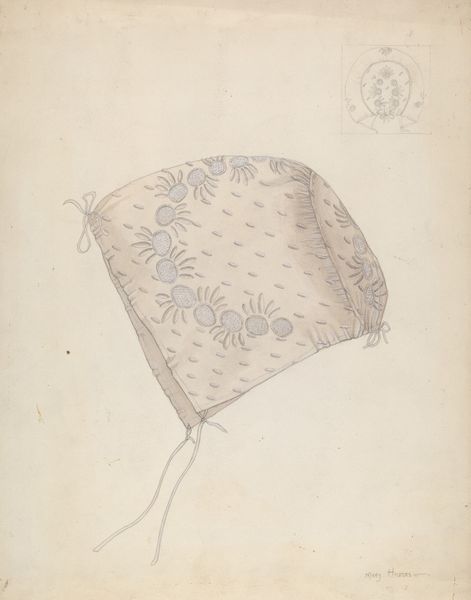
drawing, coloured-pencil, watercolor
#
drawing
#
coloured-pencil
#
watercolor
#
coloured pencil
#
watercolour illustration
Dimensions: overall: 32.9 x 27.3 cm (12 15/16 x 10 3/4 in.)
Copyright: National Gallery of Art: CC0 1.0
Editor: This is "Fan," a watercolour and colored pencil drawing by Edna C. Rex, around 1938. I am immediately drawn to its intricate detail, particularly how the artist captured the texture and pattern of the feathers. What compositional elements stand out to you in this piece? Curator: The composition indeed relies heavily on texture and pattern, which are fundamental to our perception of this work. Note how Rex manipulates the media to differentiate between the textures of the feathers versus the fan's handle. The radial symmetry focuses the gaze, but it's the nuanced interplay of light and shadow across each feather barb that establishes visual tension. Do you perceive any deviation from pure representation? Editor: I think so! It appears realistically rendered at first glance. Yet, observing the patterned handle in contrast with the fanned array of the feathers introduces a sense of stylized abstraction. It prevents the representation from being purely mimetic. How does that abstraction change your interpretation of the object depicted? Curator: Precisely! By emphasizing pattern over strict imitation, the artist encourages a semiotic reading. Consider the formal device of repetition. The regular, interlocking patterns of the handle present a visual language – a kind of controlled, architectural counterpart to the organic form above. It asks us to analyze this object not only as a "fan," but as a structured exploration of contrasting formal principles. Does that modified emphasis highlight any aspect of the depicted subject? Editor: It does. Concentrating on formal values causes the "fan-ness" to be merely incidental! Looking closely reveals how line, texture, value, and symmetry function to communicate a particular sensibility or attitude of a purely visual expression. Curator: Well articulated! Thus, an appreciation of representational image shifts from function to formal intention, unveiling the capacity of the piece beyond pure mimesis.
Comments
No comments
Be the first to comment and join the conversation on the ultimate creative platform.
